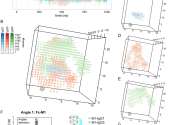Re-engineering cancerous tumors to self-destruct and kill drug-resistant cells
Treating cancer can sometimes feel like a game of Whac-A-Mole. The disease can become resistant to treatment, and clinicians never know when, where and what resistance might emerge, leaving them one step behind. But a team ...
Jul 4, 2024
0
119






